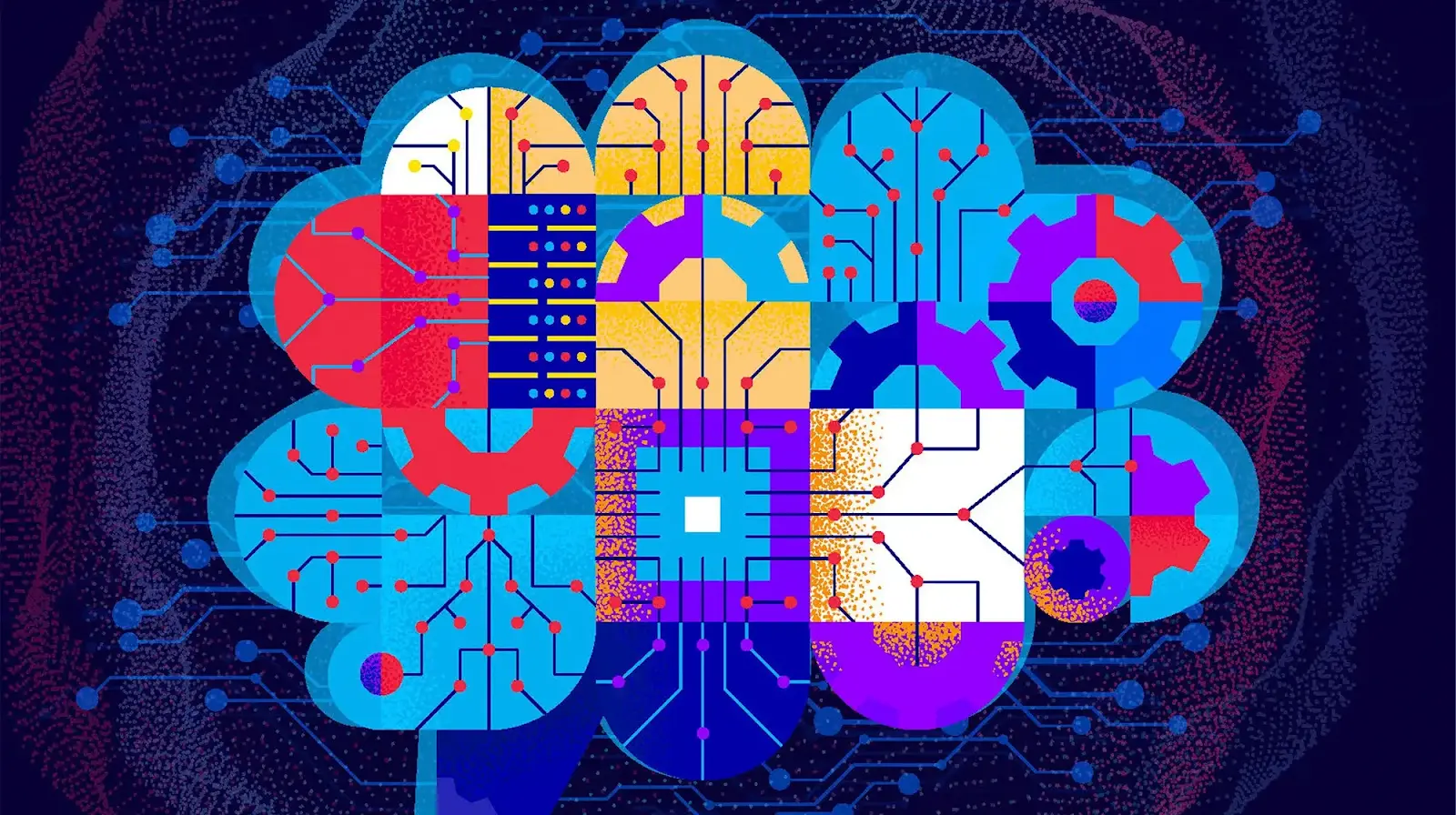In 2024, over 80% of digital display ads were transacted programmatically, according to eMarketer. A significant transformation is underway beneath the surface, driven by artificial intelligence. AI is now the critical driver of scale, efficiency, and performance across programmatic advertising.
Where programmatic once relied on rules-based systems and historical audience targeting, AI removes guesswork and enables the evaluation of billions of signals in real-time, learning from them and making decisions faster and more accurately than any human could.
This evolution is fundamentally changing how advertisers approach media buying. Instead of asking "where should we spend?" AI-powered systems ask deeper, more predictive questions and answer them instantly:
Mobupps is breaking down the key areas where AI is driving this change.
One of the biggest transformations AI brings to programmatic is real-time optimization based on live data. AI models continuously evaluate which traffic sources are performing well, how users behave across sessions, and where conversion likelihood is trending up or down. These systems adapt within milliseconds, automatically reallocating spend toward higher-value audiences or placements and reducing exposure to underperforming segments.
For example, if a user in Jakarta with a mid-range Android device shows high engagement rates on fintech apps in the early evening, AI will spot that trend and act on it long before a manual optimization could take place.
According to McKinsey, about 71% respondents say their organizations regularly use gen AI in at least one business function in marketing or sales departments. These teams see improvement in conversions, lower CPAs, and faster iteration cycles.

Managing spend across multiple campaigns, geographies, and formats can quickly become complex, especially when manual adjustments are involved. Mobupps addresses this through rule-based budget automation, letting advertisers define performance and pacing goals upfront.
For example, advertisers can set a daily spend cap, enforce target CPMs, or pause low-performing creatives automatically. Once the rules are set, the AI handles optimization, adjusting bids, reallocating budget, or pausing placements based on real-time performance signals.
The result is more consistent delivery against targets, faster reaction to changes in market conditions, and reduced risk of overspending or underdelivering. On average, clients using automated controls report more predictable pacing and the budget's goal.
The most overlooked benefit of AI in programmatic is its adaptability to regional nuances. A campaign that performs well in Germany may fail in Indonesia, unless your system understands what works locally. AI models trained on local datasets, such as device usage, network speeds, and cultural engagement patterns, can tailor bidding, creative delivery, and budget pacing per region.
One of the strengths of the Mobupps i/RTB platform is its reach. We're integrated with over 100 top SSPs and DSPs, providing our partners with access to a diverse range of inventory types across display, in-app, native, video, and CTV. Our infrastructure supports both global reach and local precision, enabling campaign customization for all regions. This ability to scale globally while learning locally is essential in emerging markets where user behavior can shift rapidly.
Fraud is a $100+ billion problem in digital advertising. Even with industry standards like app-ads.txt and sellers.json, bad actors continuously evolve, exploiting new tactics like device spoofing, install farms, and CTIT manipulation.
What makes AI effective here is its ability to learn what fraud looks like. Real-time anomaly detection can flag behavior that deviates from expected patterns, even if it's never been seen before. For instance, an unusual spike in clicks from a new device model in a specific region can be caught and blocked within seconds, long before it drains the budget.
Forward-looking platforms are now combining these insights with tools like Pixalate or GeoEdge, but the difference comes from native AI layers that act before fraud affects performance metrics.

We’ve invested heavily in applying AI to these exact challenges. Our proprietary i/RTB platform integrates AI at every level:
We connect with over 100 SSPs and DSPs globally, allowing our clients to deploy AI-driven strategies across mobile, in-app, web, and CTV environments, with measurable outcomes.
Advertisers today need to move faster, spend smarter, and demonstrate performance in real-time. The i/RTB platform was built with exactly that in mind: intelligent bidding, adaptive optimization, and transparent operations that put business outcomes first. AI-driven tools give you the edge needed to outperform and make the goals achievable in real time. At Mobupps, we are keeping pace with AI transformation in programmatic advertising and helping drive it. Explore smarter ways to grow global campaigns or test new markets. Book a meeting to discuss strategy: marketing@mobupps.com
In 2024, over 80% of digital display ads were transacted programmatically, according to eMarketer. A significant transformation is underway beneath the surface, driven by artificial intelligence. AI is now the critical driver of scale, efficiency, and performance across programmatic advertising.
Where programmatic once relied on rules-based systems and historical audience targeting, AI removes guesswork and enables the evaluation of billions of signals in real-time, learning from them and making decisions faster and more accurately than any human could.
This evolution is fundamentally changing how advertisers approach media buying. Instead of asking "where should we spend?" AI-powered systems ask deeper, more predictive questions and answer them instantly:
Mobupps is breaking down the key areas where AI is driving this change.
One of the biggest transformations AI brings to programmatic is real-time optimization based on live data. AI models continuously evaluate which traffic sources are performing well, how users behave across sessions, and where conversion likelihood is trending up or down. These systems adapt within milliseconds, automatically reallocating spend toward higher-value audiences or placements and reducing exposure to underperforming segments.
For example, if a user in Jakarta with a mid-range Android device shows high engagement rates on fintech apps in the early evening, AI will spot that trend and act on it long before a manual optimization could take place.
According to McKinsey, about 71% respondents say their organizations regularly use gen AI in at least one business function in marketing or sales departments. These teams see improvement in conversions, lower CPAs, and faster iteration cycles.

Managing spend across multiple campaigns, geographies, and formats can quickly become complex, especially when manual adjustments are involved. Mobupps addresses this through rule-based budget automation, letting advertisers define performance and pacing goals upfront.
For example, advertisers can set a daily spend cap, enforce target CPMs, or pause low-performing creatives automatically. Once the rules are set, the AI handles optimization, adjusting bids, reallocating budget, or pausing placements based on real-time performance signals.
The result is more consistent delivery against targets, faster reaction to changes in market conditions, and reduced risk of overspending or underdelivering. On average, clients using automated controls report more predictable pacing and the budget's goal.
The most overlooked benefit of AI in programmatic is its adaptability to regional nuances. A campaign that performs well in Germany may fail in Indonesia, unless your system understands what works locally. AI models trained on local datasets, such as device usage, network speeds, and cultural engagement patterns, can tailor bidding, creative delivery, and budget pacing per region.
One of the strengths of the Mobupps i/RTB platform is its reach. We're integrated with over 100 top SSPs and DSPs, providing our partners with access to a diverse range of inventory types across display, in-app, native, video, and CTV. Our infrastructure supports both global reach and local precision, enabling campaign customization for all regions. This ability to scale globally while learning locally is essential in emerging markets where user behavior can shift rapidly.
Fraud is a $100+ billion problem in digital advertising. Even with industry standards like app-ads.txt and sellers.json, bad actors continuously evolve, exploiting new tactics like device spoofing, install farms, and CTIT manipulation.
What makes AI effective here is its ability to learn what fraud looks like. Real-time anomaly detection can flag behavior that deviates from expected patterns, even if it's never been seen before. For instance, an unusual spike in clicks from a new device model in a specific region can be caught and blocked within seconds, long before it drains the budget.
Forward-looking platforms are now combining these insights with tools like Pixalate or GeoEdge, but the difference comes from native AI layers that act before fraud affects performance metrics.

We’ve invested heavily in applying AI to these exact challenges. Our proprietary i/RTB platform integrates AI at every level:
We connect with over 100 SSPs and DSPs globally, allowing our clients to deploy AI-driven strategies across mobile, in-app, web, and CTV environments, with measurable outcomes.
Advertisers today need to move faster, spend smarter, and demonstrate performance in real-time. The i/RTB platform was built with exactly that in mind: intelligent bidding, adaptive optimization, and transparent operations that put business outcomes first. AI-driven tools give you the edge needed to outperform and make the goals achievable in real time. At Mobupps, we are keeping pace with AI transformation in programmatic advertising and helping drive it. Explore smarter ways to grow global campaigns or test new markets. Book a meeting to discuss strategy: marketing@mobupps.com

